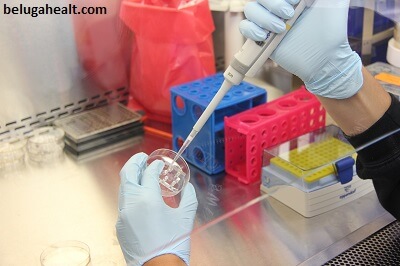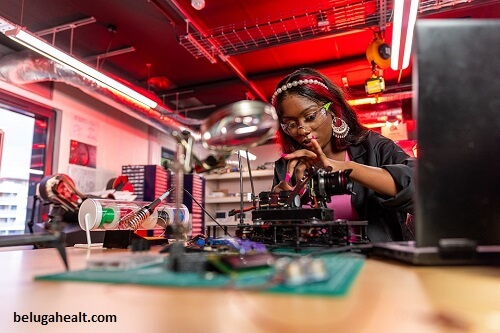CVJC Health Equity Lab

CVJC Health Equity Lab:
Introduction:
Health equity is perhaps the most compelling issue lately. Though inequities continue to be there in healthcare outcomes, it is coupled with the action steps. That focus on SDOH and equal availability of quality health care, has never felt more urgent. One such organization is CVJC Health Equity Lab.

Health Equity Lab is the starting point for health equity movement development as it brings solutions to ensure solutions of systemic issues driving health disparities. The article briefly explains the mission and services of CVJC Health Equity Lab. How it works, and results achieved thus far in leading health equity across communities.
1. Summary CVJC Health Equity Lab:
The CVJC Health Equity Lab is also known as the Center for Value-Based Health Care and Justice Health Equity Lab. This program aims at the structural and social determinants that enhance health outcomes. It’s also a research, collaboration, and policy development hub toward reducing systemic inequities in healthcare.
The organization is now working with academic institutions, healthcare providers, policymakers, and community leaders. And advocacy groups to help design data-driven solutions and equitable health practices. The lab work includes wide-ranging research on social determinants of health as well as pilots put in to reduce health disparities.
The Health Equity Lab promotes the achievement of health equity through the provision of necessary tools, and resources. And support to all populations, especially the underserved and marginalized groups, in achieving the best possible health outcome. Embracing community engagement, innovation, and a means of using technology is a part of this mission.
2. Mission and Core Values:
The primary goals of the CVJC Health Equity Lab are ending health disparities and improving the health outcomes for all, especially vulnerable populations. In achieving that end, it focuses on the following priority objectives:
- Advancing Health Equity: It addresses efforts to reduce the disparities in health outcomes. That results from discrimination against people of color, low-income, and rural residents, and other underrepresented groups.
- Collaboration and Partnerships: The laboratory would take an alliance between the health care providers, researchers, policymakers, community leaders, and social organizations as a way forward since it develops more holistic and sustainable solutions that deal with health inequity.
- Data-Driven Decision Making: The dependency of the laboratory on high-tech research, data analytics, and evidence-based methods in monitoring health inequities as well as interventions.
It implements new models of care, policy reforms, and interventions rooted in addressing the sources of health inequities. Lab’s commitment to being a voice for social justice in healthcare has been stretched. And so this place advocates for policies that comfort people or groups in finding access to healthcare, economic opportunities, education, or safety things that would lead to healthy outcomes.
3. Critical Programmes and Initiatives of Health Equity Lab:
CVJC Health Equity Lab carries out several programs and initiatives to understand various forms of health equity. The most important among them are:
a. SDOH Research:
The largest laboratory programs are based on what is termed as understanding. And addressing the Social Determinants of Health, or SDOH. According to SDOH, it refers to non-medical influences that affect health outcomes. It includes economic stability, education, social and community context, access to healthcare, and the built environment.
The Health Equity Lab delves into how much more extensively SDOH affects understudied communities. That is suffering more disproportionately than others. Upon raising these issues, the lab collaborates with health providers and policymakers to advance ideas on how to mitigate the effects.
Research can be conducted in the following areas:
- Housing and Health: Determine how lack of access to affordable housing or inability to afford housing leads to chronic conditions like asthma, cardiovascular disease, or mental health issues.
- Food Insecurity and Health: Determine if food insecurity and poor quality of food have an impact on health outcomes for the community, especially low-income groups. Some possible topics may include initiatives such as food stamp programs or urban gardens.
Health Care Access Identify site-specific barriers to accessing health care. Such as transportation to a site, no insurance, and long waits for physicians.

b.Community Health Initiatives and Advocacy:
The Health Equity Lab partners with community-based communities to work on developing and implementing health interventions that are tailored to the areas of need. Interventions are therefore specific to the needs of different populations, particularly in areas where such access does not exist. Such interventions can take a variety of forms including:
- Mobile Health Clinics: Bring on-the-spot health services to the most vulnerable populations by arranging mobile health units.
- Health Education Campaigns: Through health literacy campaigns educate preventive care, healthy lifestyle choices, mental health awareness, and chronic conditions.
- Supportive Programs for the Vulnerable Groups: Support programs for the homeless population, immigrants, sexual minorities, and the poor, who have relatively easier access to care.
Apart from these policies, the lab is a strong supporter of health equity. This includes public health funding activities, investment in primary care, and legislation that will be expected to result in decreases in health disparities.
c. Policy and Systems Change:
The CVJC Health Equity Lab engages with a focus on change at the local, state, and national levels. The policy work of the lab advocates for system-wide change through legislative advocacy to urge lawmakers to move on to health inequities. Health policy focus areas include:
- Medicaid and Insurance Expansion: Advocating for expansion of health insurance access to low-income persons and families; Medicaid expansion; and universal coverage steps.
- Workforce Diversity: Advocacy for policy changes to make the healthcare workforce more diversified. So professionals in the health industry should come from the communities. They will serve and be specially prepared to address the needs of those populations.
- Health Equity Legislation: The Health Equity Lab advocates for the passage of full health equity laws that focus on the issues of SDOH, equal access to the distribution of health facilities, and the elimination of racial and ethnic disparities in health.
d. Health Equity and Innovation Technology:
Health Equity Lab advocates for the role of technology and innovation in enhancing service delivery on issues of health. Some of the initiatives by the lab include:
- Telehealth Programs: Roll out telehealth programs for populations in rural or urban underserved areas through e-consults, mental health, and chronic disease management.
- Data analytics for health equity: Advanced data analytics and machine learning track and identify at-risk populations and forecast future trends for health outcomes. Data-informed interventions are tailored to community-level needs.
- Mobile Health Applications: Designing applications that can help people monitor their health, access health care, and provide reminders about preventive care appointments or medication adherence.
4. Measurement of CVJC Health Equity Lab:
CVJC Health Equity Lab utilizes qualitative as well as quantitative measures in the assessment of performance. Some of the relevant metrics are as follows:
- Health Outcomes: Recording decrease in rates of chronic conditions, emergency room visits, and hospital readmissions in the target communities.
- Increased Access to Care: Recording trends on increased access to care, including coverage and preventive care services.
- Community Engagement and Satisfaction: Collection of feedback from community members to measure satisfaction in health interventions and initiatives.
- Policy Impact: Tracking changes in local, state, and federal policies that impact reductions in health disparities.
This ensures all its programs and initiatives create real and sustainable change by employing robust research and data collection as well as meaningful participation from the community.
5. FAQs About CVJC Health Equity Lab:
Q1: What is health equity and why does it matter?
A1: Health equity is the concept by which every person should attain the highest possible health level with no avoidable differences in experiencing such health based on their race, sex, geography, or other socioeconomic status Components are considered fundamental because health disparities affect the most marginalized groups, causing higher rates of disease, disability, and death in those particular communities. Q2 What
Q2: What does the CVJC Health Equity Lab do with the community?
A2: The Health Equity Lab works directly with communities to implement health education programs and provides mobile healthcare services in doing interventions within the local social determinants of health. They work with community leaders to ensure that any interventions are appropriately culturally relevant and meet the specific needs of that population.
Q3: What are a few of the most critical social determinants of health that the Health Equity Lab tackles?
A3: Health Equity Lab works on a broad range of social determinants of health, such as accessibility of housing for a reasonable price, food insecurity, accessibility to quality health services, education, income distribution inequality, and environmental hazards by pollution and dangerous residence conditions.
Q4: How does Health Equity Lab deploy technology?
A4: The Lab uses technologies such as telehealth, mobile health applications, and data analytics to discover disparities in the healthcare system. All the technologies make care accessible, improve outcomes in health, and inform needs within communities about health.
Q5: How can the individual contribute toward the work of the CVJC Health Equity Lab?
A5: Community members can promote the Lab in several ways, which range from volunteering for local health initiatives, making donations, and advocating for policies to do with health equity. One can also participate in various research studies or health education programs conducted by the lab.
Conclusion:
A CVJC Health Equity Lab is an impassioned justice advocate in the pursuit of the identification and analysis of systemic barriers to health disparities with innovative solutions to better health outcomes.

All of these laboratory research, community-based initiatives, policy advocacy, and technological innovations in the lab can bring it that much closer to a day when all will have access to health care, everybody deserves based on background. With health inequity further challenging the healthcare system
